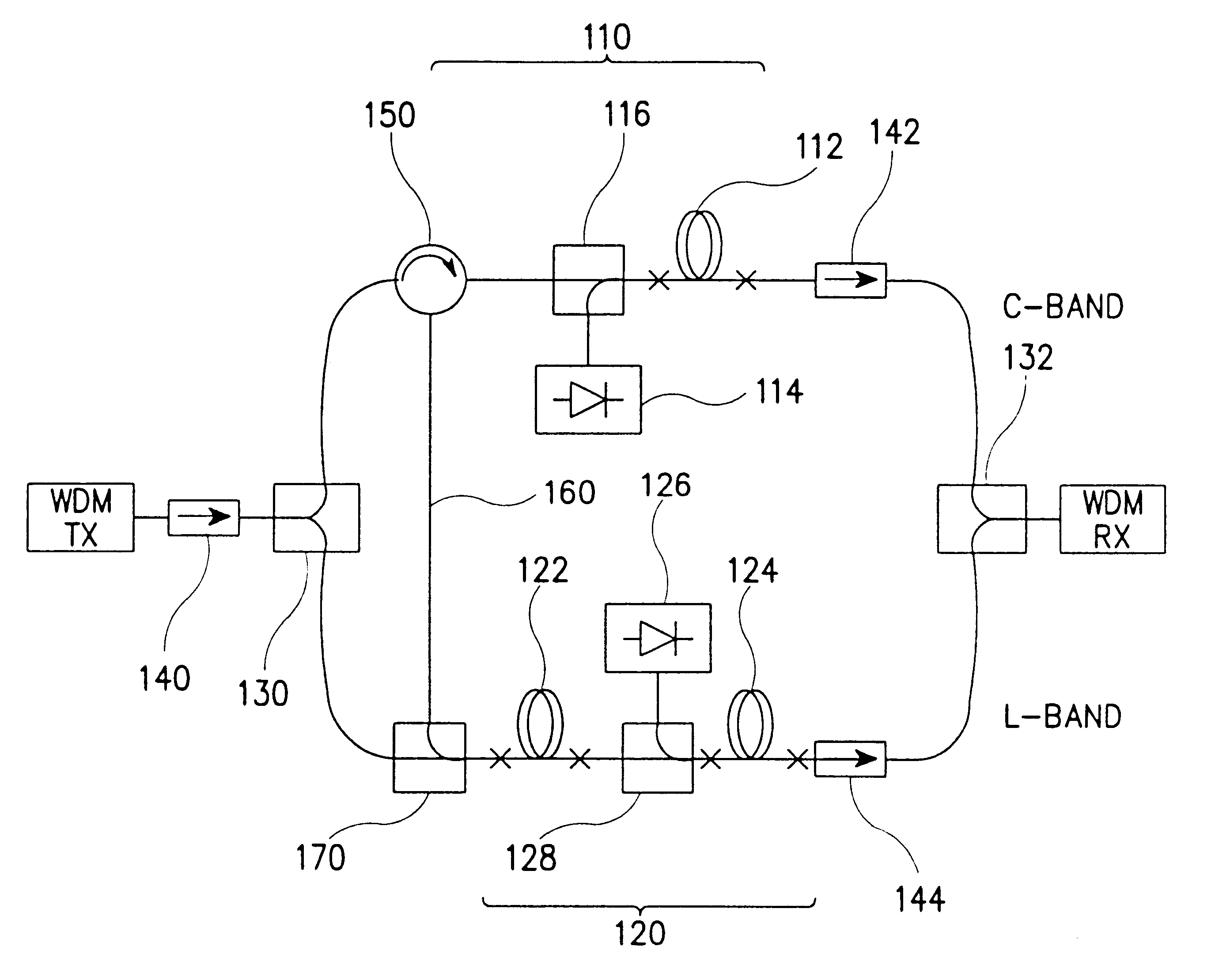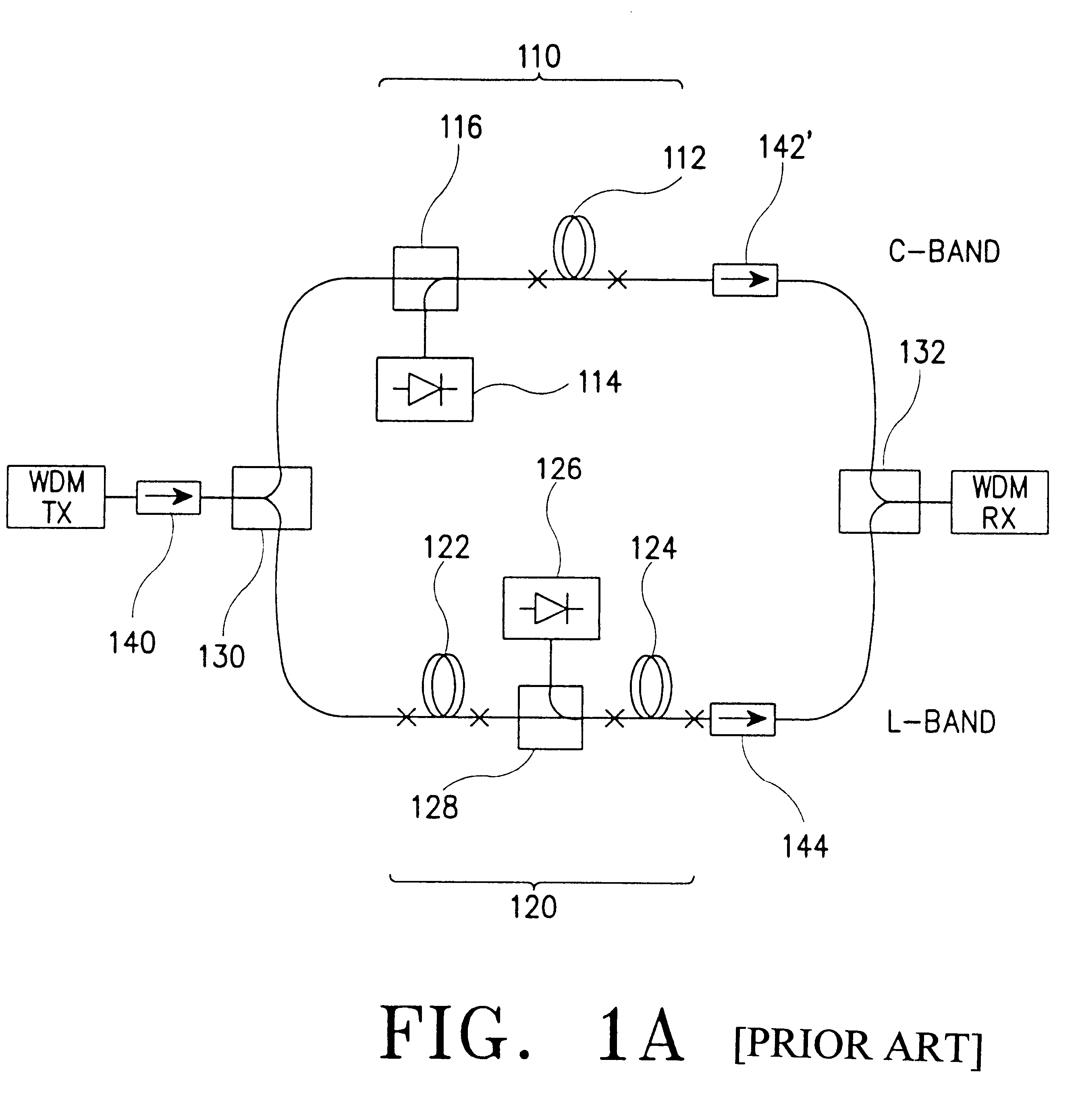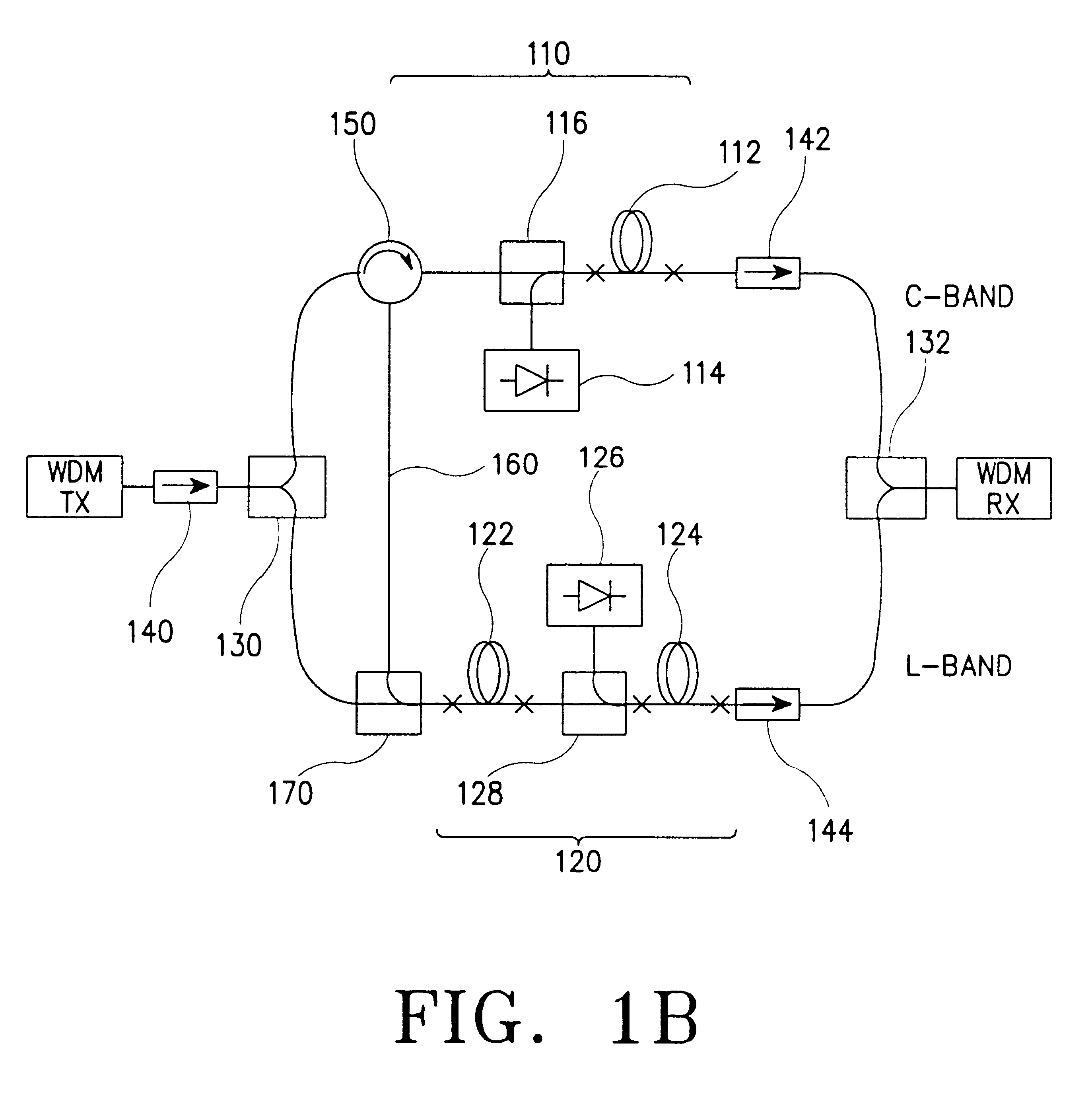Parallel optical fiber amplifier with high power conversion
a technology of parallel optical fiber and amplifier, applied in the field of parallel optical fiber amplifier, can solve the problems of low power conversion efficiency, low pumping efficiency, and high-power pumping requirements, and achieve the effect of high power conversion efficiency
- Summary
- Abstract
- Description
- Claims
- Application Information
AI Technical Summary
Benefits of technology
Problems solved by technology
Method used
Image
Examples
Embodiment Construction
The following description will be made while comparing a parallel optical fiber amplifier according to an embodiment of the present invention with a conventional optical fiber amplifier in terms of the configuration and performance, for easy identification for effects obtained by the embodiment of the present invention.
In FIG. 1a illustrating the conventional parallel optical fiber amplifier, a C-band silica-based EDFA stage 110 and an L-band silica-based EDFA stage 120 are connected to each other in parallel by C-band / L-band WDM couplers 130 and 132, respectively. The C-band EDFA stage 110 includes a C-band EDF 112 having a predetermined length, and a first laser diode 114 for outputting the pumping light of 980 nm to the C-band EDF 112. The first laser diode 114 is coupled to the C-band EDF 112 via a first WDM coupler 116.
In contrast, the L-band EDFA stage 120 includes two EDFs 122 and 124 connected together in series, and a second laser diode 126 coupled between these EDFs 122 an...
PUM
 Login to View More
Login to View More Abstract
Description
Claims
Application Information
 Login to View More
Login to View More - R&D
- Intellectual Property
- Life Sciences
- Materials
- Tech Scout
- Unparalleled Data Quality
- Higher Quality Content
- 60% Fewer Hallucinations
Browse by: Latest US Patents, China's latest patents, Technical Efficacy Thesaurus, Application Domain, Technology Topic, Popular Technical Reports.
© 2025 PatSnap. All rights reserved.Legal|Privacy policy|Modern Slavery Act Transparency Statement|Sitemap|About US| Contact US: help@patsnap.com



